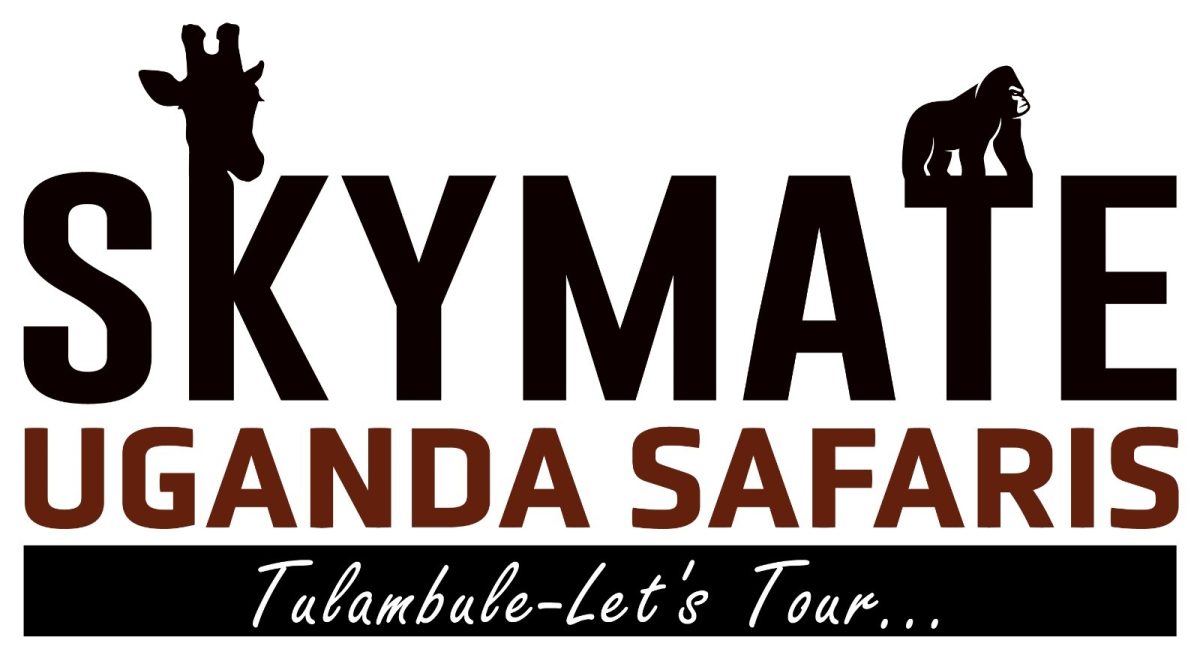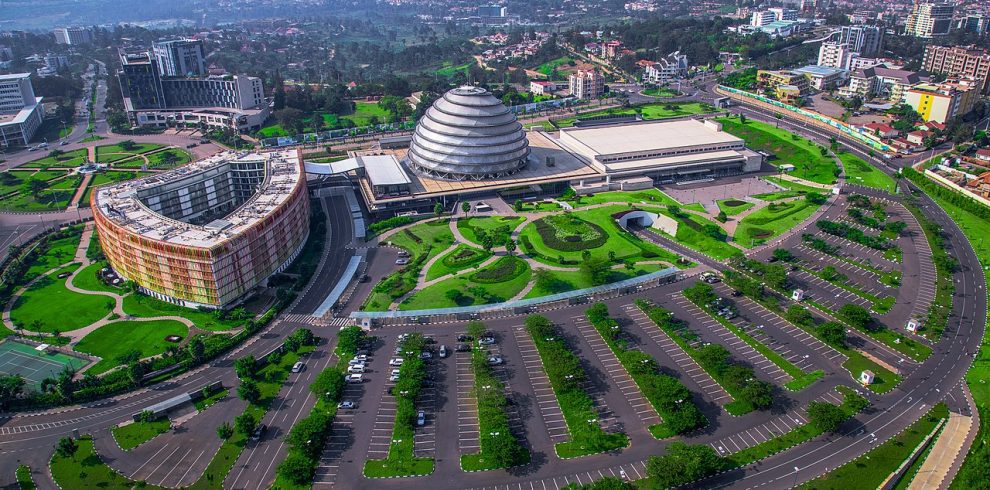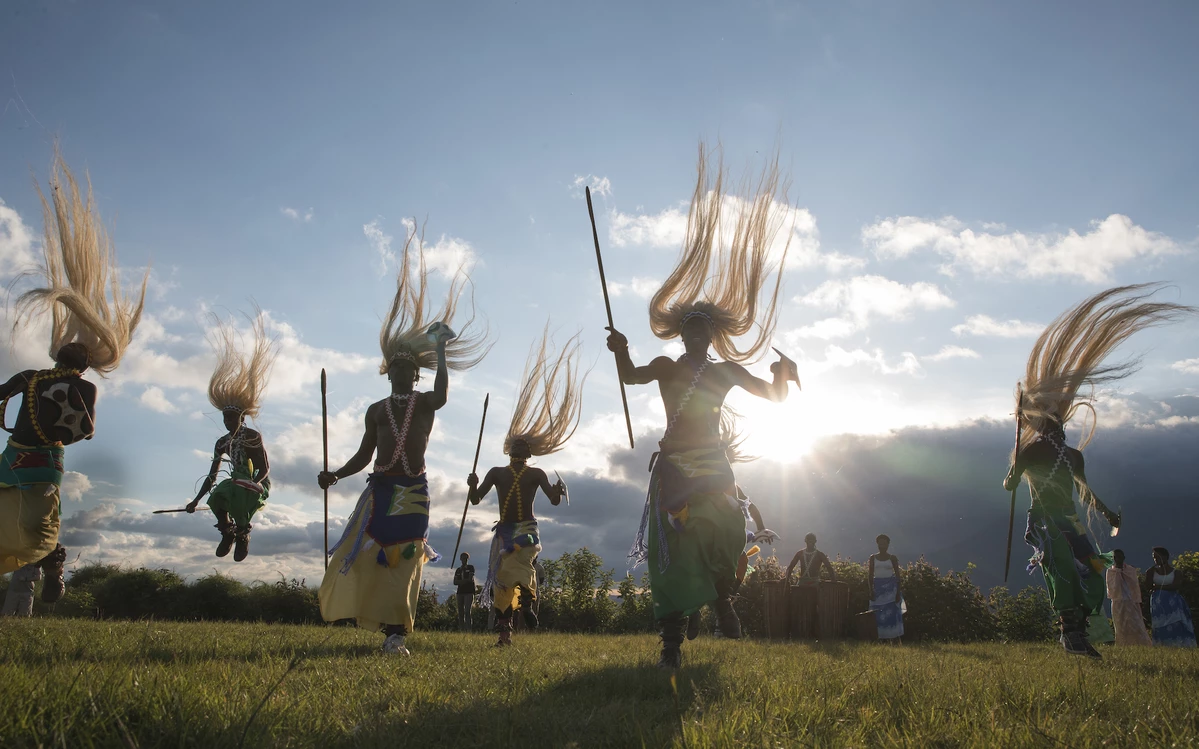Many visitors come to Rwanda to experience the magic moments with mountain gorillas, but there are many more exciting things to do in Rwanda. Squeezed between Uganda, the Democratic Republic of Congo, and Tanzania, this small landlocked East-African nation offers a great mix of cultural activities, rich wildlife, nature, stunning landscapes, and vibrant art to curious travelers.
Best Things To Do In Rwanda
In no particular order, we’ve rounded up 21 of the very best things to do in Rwanda right here.
1. Tour Kigali City
Kigali – the capital city of Rwanda – is the main arrival hub for most tourists.
This charming city is spread out over several hills and valleys, with good roads offering easy access to all national parks across this tiny nation. With Rwanda in recent times voted the world’s 9th safest country and the safest country in Africa by the World Economic Forum, Kigali can be described as the beating heart of the country.
Kigali is a lively, safe, well-run city with a modern skyline and a growing local economy. Old informal settlements are swiftly transforming into attractive suburbs and shopping areas for both locals and visitors on Rwanda tours. Most visitors to Rwanda come to explore wildlife parks and so have, at the most, half a day of free time to experience Kigali.
With that in mind, we’ve put up a list of our top things to do in Kigali:
Visit Kigali Genocide Memorial
This is the final resting place for 250,000 victims of the 1994 genocide against the Tutsi people in Rwanda in which almost 1 million people lost their life in just 100 days.
It is a place of remembrance and learning. Come with tissues. This is a profound and powerful experience of promoting reconciliation and building peace through education.
We advise that you tour the Memorial at the start of your safari in Rwanda so that it is not your last memory of this wonderful country.
Tour Niyo Arts Centre
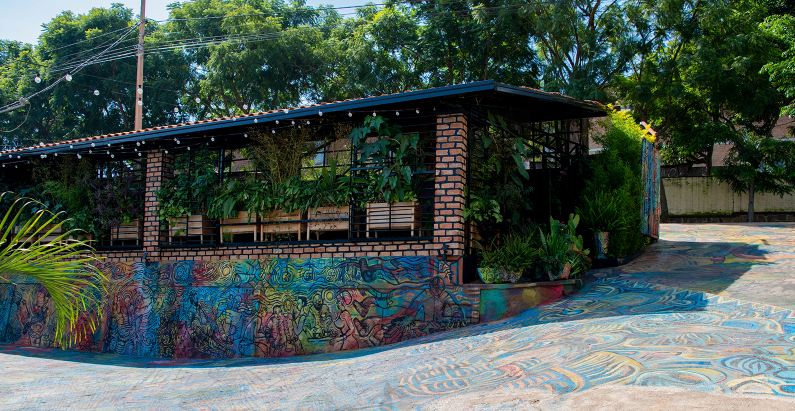
Niyo Arts Centre features the works of Rwandan artists-in-residence at its space in the central Kacyiru area of Kigali city. Contemporary African art, music, and dance performances are among some of the regular exhibits at the gallery; 40% of the profits go to the Niyo Foundation, an organization dedicated to supporting children in the streets, single mothers, genocide survivors and individuals impacted by poverty.
Visit Inema Arts Centre
Founded by Emmanuel Nkuranga, a self-taught painter, this is a multifaceted art gallery and creative organization in Kigali that offers community art classes and a platform for Rwanda’s creative sector to thrive.
There are many artworks on display from some of the brightest talents of Rwanda and you can see the artists at work in the studio. Here you can buy locally made items from local artisans, attend one of their events, or even learn a new skill, such as drumming or dancing.
Discover Caplaki Craft Village
Caplaki Craft Village is a market for a large selection of arts and handcrafted items – from independent artists and small businesses. Here, you can find intricately woven baskets and carved woodwork to colourful beaded jewellery and tribal masks.
Tour Nyandungu Urban Wetland Eco-Park
This 121-hectare park is Kigali’s first finished project in its attempt to restore the biodiversity of urban wetland ecosystems. The park was opened in 2022. It features tranquil pathways flower gardens and bamboo-lined lanes.
There is even a space dedicated to highlighting the medicinal plants Rwandans traditionally used for different ailments. Bicycles are available for rent if that is more your speed, and signs labeling each species in both Kinyarwanda and English punctuate the entire park.
Question Coffee Café
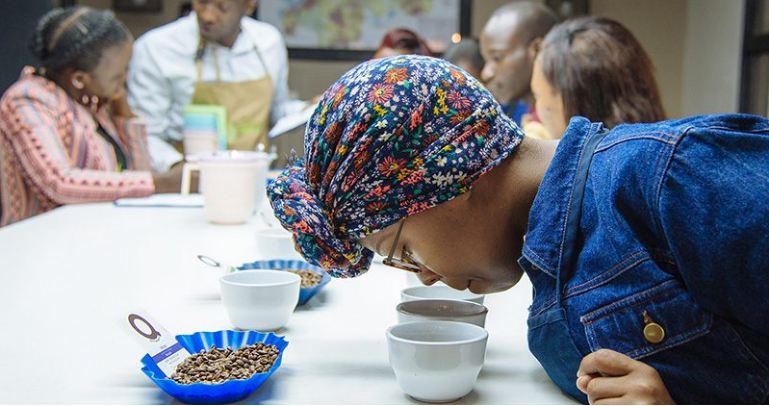
Coffee culture is strong in Kigali city with establishments like Question Coffee. In 2020, this coffee centre worn TripAdvisor Travelers’ Choice Award for top 10% of restaurants worldwide.
It is an organization that empowers over 30,000 women coffee growers across Rwanda, and Rubia Coffee Roasters in Kimihurura, a specialty coffee roastery and cafe, growing every year. It aims to increase the economic independence of women and their families.
Nyamirambo Women's Centre
Nyamirambo Centre employs over 50 women from the community to create a large variety of women’s accessories, children’s clothing, and home decor products. Visitors can buy these items and attend basket weaving and art classes and learn about traditional cooking.
Visit Kimironko Market
A visit to Kigali’s Kimironko Market offers a unique opportunity to watch local city life in action. This is the busiest and biggest market in the city where nearly everything is sold from red mangoes, green melon, golden pineapples, bushels of green bananas and beans in unimaginable patterns. And it is not just produce; the stalls, which have been leased by families for generations, offer textiles, clothing, beauty products and more.
2. Gorilla Trekking in Volcanoes
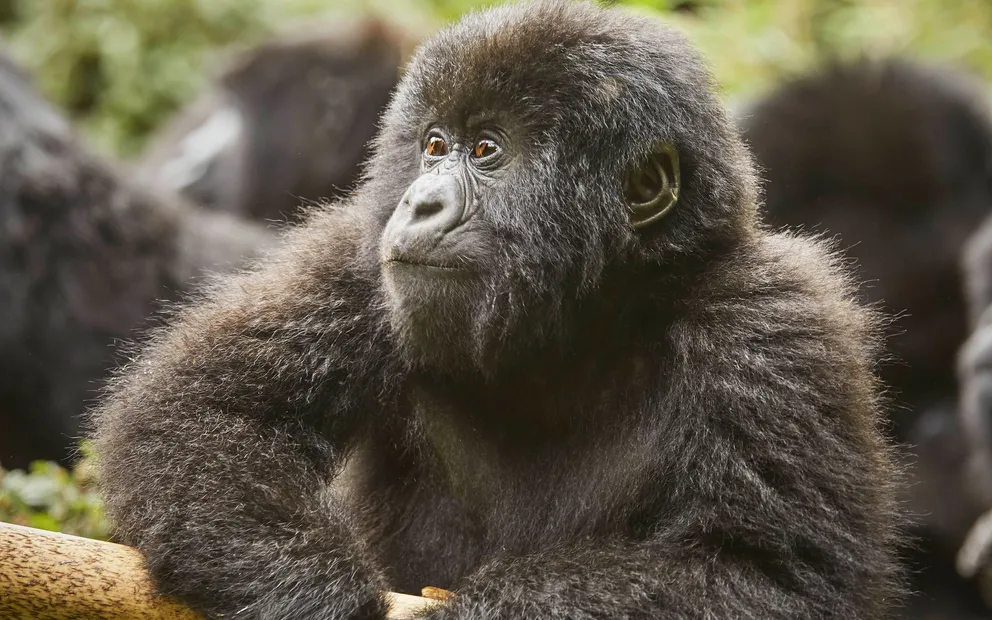
Forming a natural border between Uganda, Rwanda and Congo, the Virunga Volcanoes are where Rwanda actually earns its nickname as the ‘Land of a Thousand Hills.’
The imposing Rwandan Virungas are situated in Volcanoes National Park, the country’s top tourist destination. Here, hidden among lush bamboo forests carpeting the volcanoes, are 300 of the last remaining 1063 mountain gorillas on Earth.
An up-close encounter with these endangered giants while gorilla trekking (US$1500 per person, which includes compulsory guides, park entry and guards) is the highlight of a safari to Africa for many travelers.
A close-quarters encounter with a male silverback gorilla can be a spine-tingling experience, specially if you have only ever seen large wild animals from the safety of a car.
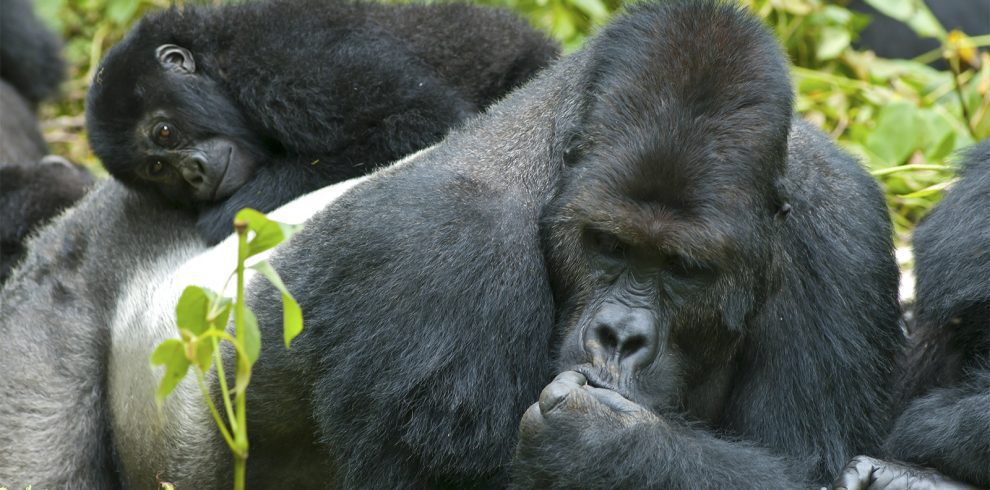
Yet despite their frightening size, gorillas are remarkably gentle animals, entirely vegetarian and quite safe to be around.
You’ll be given a safety briefing by park rangers before leaving for a trek in search of the habituated gorilla families – of which there are 10 in Volcanoes National Park.
The largest family contains over 30 members. Some families are easier to find, while others are harder to reach and require a strenuous 2 to 4-hour hike. You’ll most likely trek through dense vegetation up steep, muddy hillsides, sometimes to altitudes of over 10,000 feet.
No matter which family you end up trekking, you’re certain to have a memorable experience. Visits to the gorillas are restricted to one hour.
Visitors are asked to remain 7 meters from the gorillas at all times, but it is not uncommon to see some gorillas trying to interact with visitors – a peerless wildlife experience! You need a gorilla permit to go gorilla trekking in Rwanda.
3. Golden Monkey Tracking In Volcanoes

Although most visitors to Volcanoes National Park are understandably driven by the desire to have a face-to-face encounter with real gorillas in the mist, rare golden monkeys, a troop of which have been habituated to the presence of humans, can also be visited.
More like chimpanzee watching than a gorilla encounter, these gorgeous and active monkeys bound about the branches of bigger trees.
Golden monkeys are a subspecies of the wider-spread blue monkeys. They are distinguished by their gold body coloration which contrasts sharply with black patches on their extremities.
Classified as an endangered species, golden monkeys can only be seen in the Virunga Volcanoes in Rwanda, Uganda and the Democratic Republic of Congo. The permit to track the golden monkeys costs $ 100 and is easy to get hold of.
4. Volcano Hiking in Volcanoes National Park
The iconic summits of Rwanda’s Virunga Volcanoes also offer a variety of rewarding climbing and trekking options. Options include:
- Mount Karisimbi (14,000-ft; 4507m; two days)
- Mount Bisoke Crater Lake (12,175-ft; 3,711 m; seven hours return)
- Mount Gahinga (11,000-ft; 3474m; eight hours return)
- Mount Muhabura (13,500-ft; 4127m, nine hours return)
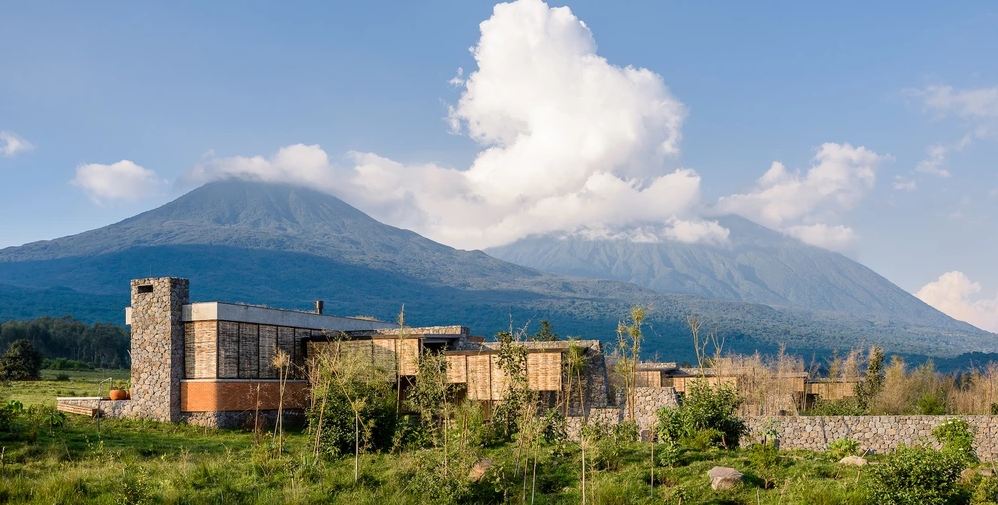
As you make your way along the ascents, you will pass some remarkable changes of vegetation, ranging from thick forests of bamboo and giant lobelia on to alpine meadows.
And there are further rewards in store: if the weather is favorable, you can enjoy spectacular views over the mountain chain. There are several possibilities for hiking up to the summits of one or more of Volcanoes, with treks ranging in length from several hours to 2 days.
A guide is required and is included in your trekking fee; additional porters are optional (US$20 per day). One of the best parts of hiking the volcanoes is that you’ll be awarded opportunities to view wildlife including gorillas, golden monkeys, buffaloes, and giant forest hogs.
In the richest birding zone of hagenia forests, you can expect to see francolins, turacos, sunbirds, waxbills, crimson-wings and various hawks and buzzards.
5. Hike To the grave of famous gorilla conservationist Dian Fossey
This 5 hour hike takes you through beautiful stretches of forest to an altitude of about 3000m. The hike pays homage to Dian Fossey, the legendary American Gorilla Conservationist who spent 20 years of her life in the misty forest of Volcanoes studying and protecting gorillas.
It is largely thanks to her work that gorilla poaching was curtailed in time to save the endangered creatures. Fossey demystified the negative perception of gorillas as being savage beasts living in the jungles of Africa as she studied gentle creatures.
This would later inspire the habituation of gorilla families for tourists to visit and see up close these amazing apes which were at the verge of extinction.
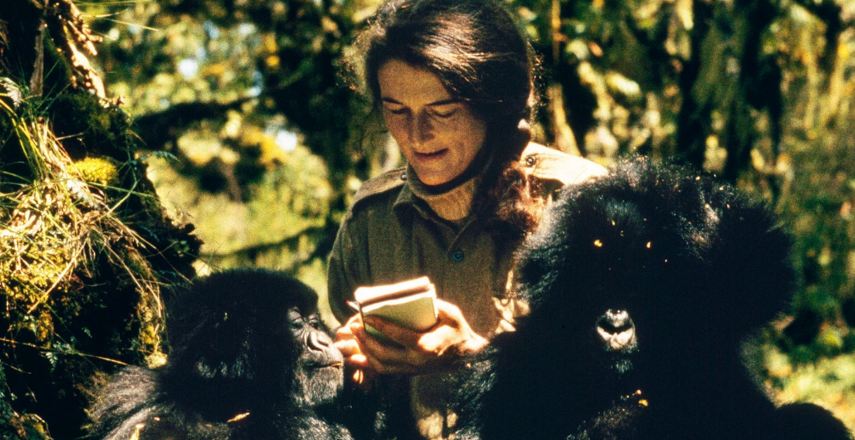
Sadly, with all her work and struggles in fighting poachers over years, Fossey had also made many enemies, especially those who benefited from this illegal trade. This haunted her on a dark night in 1985 when she was brutally hacked to death with a crude machete. She was laid to rest in the gorilla graveyard next to her favourite Gorilla Friend, Digit.
Her life ended abruptly that night but her legacy lives on as more and more people go gorilla trekking and see these magnificent human cousins thriving in their natural habitat. If you want to know more about Dian Fossey, her story was beautifully portrayed in the popular Hollywood Movie “Gorilla in the Mist” (1988), which is also the title of the book she wrote.
6. Community Visit To Gorilla Guardians Village Near Volcanoes
While you visit Volcanoes for gorilla trekking consider adding a visit to Gorilla Guardians Village. Also known as Iby’iwacu Cultural Village, it is a replica village of what traditional life was like back in the day for many Rwandans.
The centre is staffed nearly entirely by former gorilla poachers. Here, you’re given a chance to spectate or participate in many activities such as weaving, hunting skills, and carpentry as well as learn a little bit about traditional architecture, food and fashion. The word “Iby’iwacu” is a Kinyarwada word that means “Treasures of our home and heritage”.
One of the highlights of visiting the village is watching the Intore Dance performances with one such performance being the Ballet of Rwanda which was historically only performed for the Royal Court. The dance is performed by men dressed in grass wigs and carrying spears, who wear little tinkling bells on each foot, providing a ringing rhythm as the background music.
7. Walk Underground Musanze Cave near Volcanoes
Located at the foothills of Volcanoes, Musanze Caves offer a peek into the geological history of the area, which was created by intense volcanic activity that formed the Albertine Rift Valley around 65 million years ago. Extending for a length of 2km and relatively easy to hike, the underground caverns offer guests with a profound understanding of the origins of the area.
The floors of the caverns are paved, whereas the trails have stairways and walkways in place to facilitate easy movement. As you walk through the various subterranean areas, you can view intricate rock formations lit by pockets of soft sunlight, which filters through gaps in the ceiling.
8. Explore The Volcanic Twin Lakes Near Volcanoes National Park
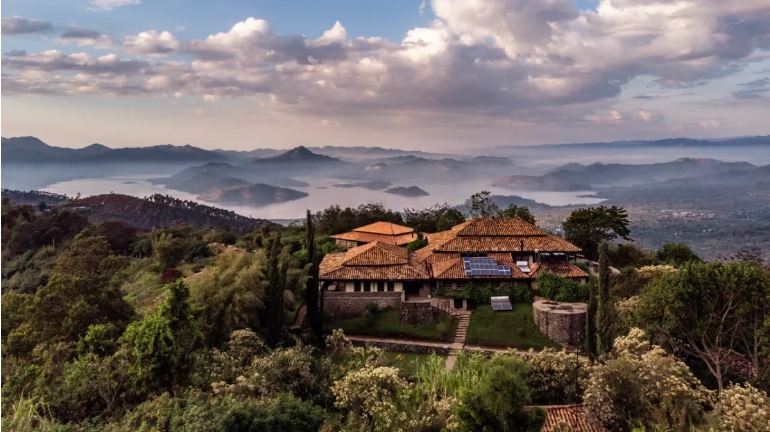
Just an hour away from Volcanoes National Park lies a little-visited but spectacular sight: the country’s volcanic Twin Lakes. Early in the morning, small islands on Lake Ruhondo and Lake Burera glow white against velvety blue water as fishermen begin their day.
Then, when the afternoon sun burns away the mist, verdant green hills appear. Though the lakes are definitely off the beaten path and tourism infrastructure is limited, visiting is rewarding as there are a variety of activity offerings, including;
- Scenic boat trips
- Kayaking excursions
- Bike rides
- Hikes
And the famed Virunga Lodge, a luxurious lodge that has been around for decades, now offers even more activities focusing on the lakes, like lakeside hikes and boat trips.
9. Attend Kwita Izina Ceremony
Rwanda celebrates its efforts to protect the country’s rare mountain gorillas every September with a special naming ceremony for all the new baby gorillas born in Volcanoes National Park in that year.
More than 280 have been named since 2005. This adorable tradition comes from and is named after, a cultural ceremony known as Kwita Izina – practiced by the local people of Rwanda for centuries, in which the family and friends of new parents participate in naming a baby.
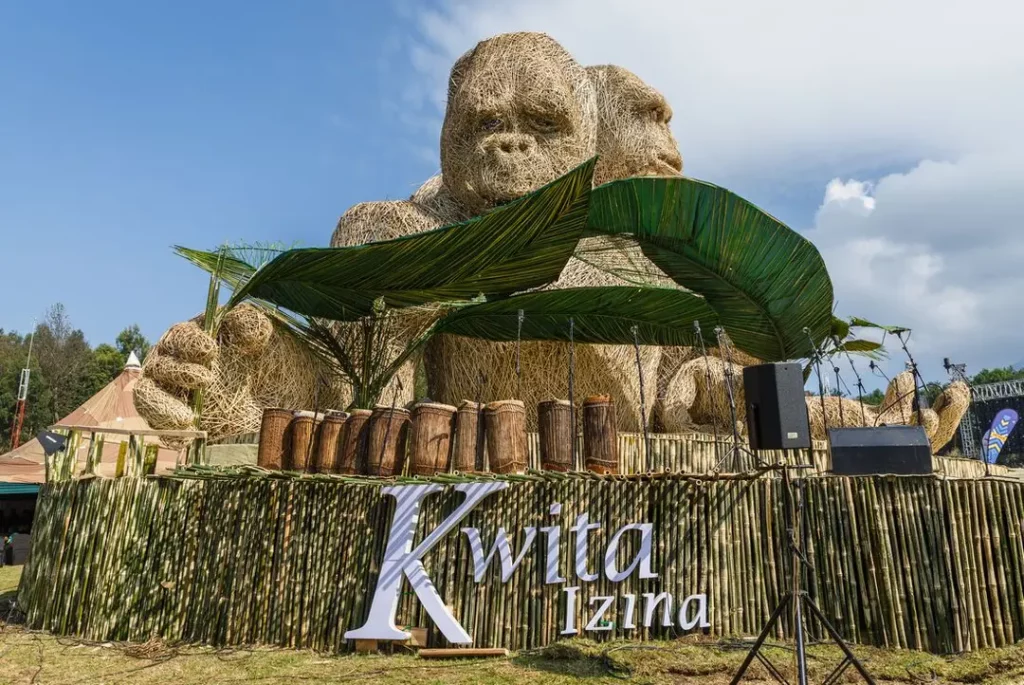
The tradition has taken on a new life since 2005 when the first baby gorilla naming ceremony took place. It is now one of the world’s most respected forums for conservation and sustainable tourism.
Every year the event chooses namers – from gorilla trackers, to researchers and doctors, to celebrities and friends of Rwanda. This year (2024), for the 20th anniversary, the Rwanda Development Board (RDB) plans to bring back as many former namers as possible, alongside new and exciting namers, to celebrate bringing a species that was critically endangered back to thriving.
It is an event like no other on Earth, yet steeped in cultural meaning and ancient custom. It is open for visitors to attend and it is a wonderful ceremony to plan and add to your trip in Rwanda.
10. Go Big 5 Game Viewing In Akagera
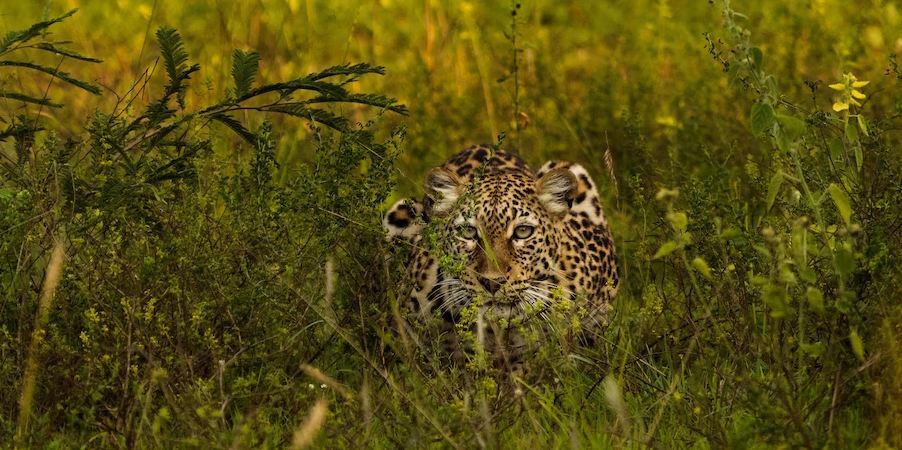
Akagera National Park – Rwanda’s largest national park (433 square miles) – is the gem of the country’s Eastern region.
While it cannot compete (yet) with its counterparts in Tanzania or Kenya, the beautiful landscapes and rich wildlife of Rwanda’s safari park are well worth the trip. Thanks to good management, strict conservation laws, the reintroduction of lions and black rhinos, the refurbishing of old camps, and the building of new ones, it is now a must-visit on any Rwandan safari itinerary.
Here you can embark on boat cruises, nature walks, and game drives in search of the African Big 5 animals, hyenas, jackals, genets, servals, hippos, crocodiles, impalas, zebras, giraffes, and more. Birdwatching is also excellent as over 490 species of birds call the park home.
11. Chimpanzee Trekking in Nyungwe Forest
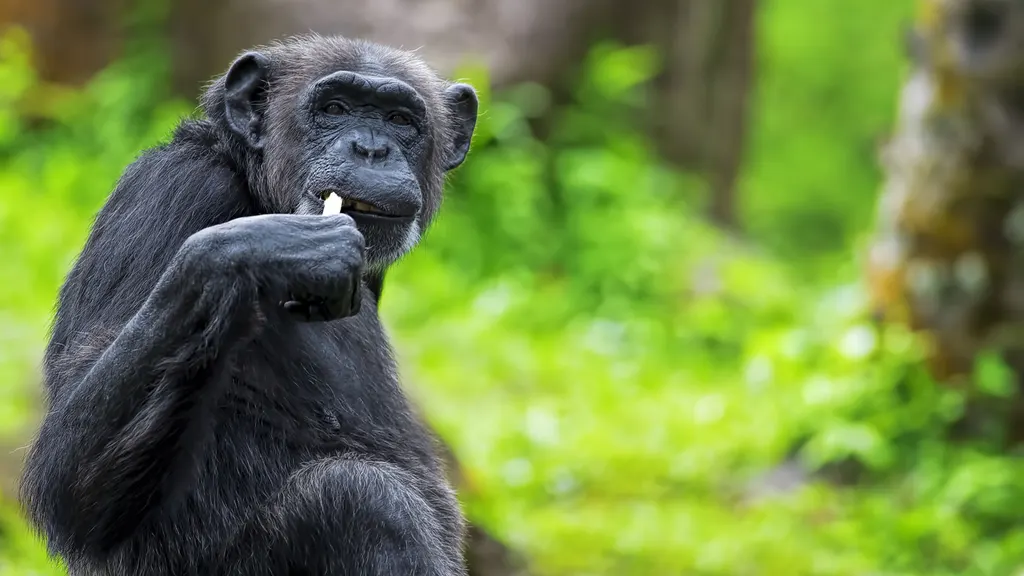
In southwestern Rwanda, Nyungwe Forest is the country’s most important area of biodiversity, with over 1000 plant species, 140 species of orchids, 13 primate species, 75 species of other mammals, at least 322 bird species and an astounding 120 species of butterflies. It was in 2023 designated as a Natural World Heritage Site by UNESCO.
Despite its great biodiversity, Nyungwe is little-known outside East Africa. Its strongest drawcard is the chance to trek with wild chimpanzees – our closest genetic ancestors. The chimps of Nyungwe have been habituated over the years to human visits.
Much like gorilla trekking, you need to be prepared for a long trek that can take up to 5. However, the vegetation on the forest floor is much less dense than in the Virunga Volcanoes where the gorillas reside, so the hike is generally a little less tiring.
During the rainy season you have a good chance to successfully track the chimpanzees on the colored trails , although in the dry season they have a tendency to head for higher elevations.
12. Colobus Monkey Tracking in Nyungwe
While chimpanzees tend to gather most of the spotlight in Nyungwe Forest, sightings of troops of other monkeys, including Angolan colobus monkeys, are virtually guaranteed.
The Angolan colobus is an arboreal old world monkey that is distinguished by its black fur and long, silky white locks of hair. Colobus monkeys are spread throughout Africa’s tropical rainforests, although they reach epic numbers in Nyungwe Forest National Park.
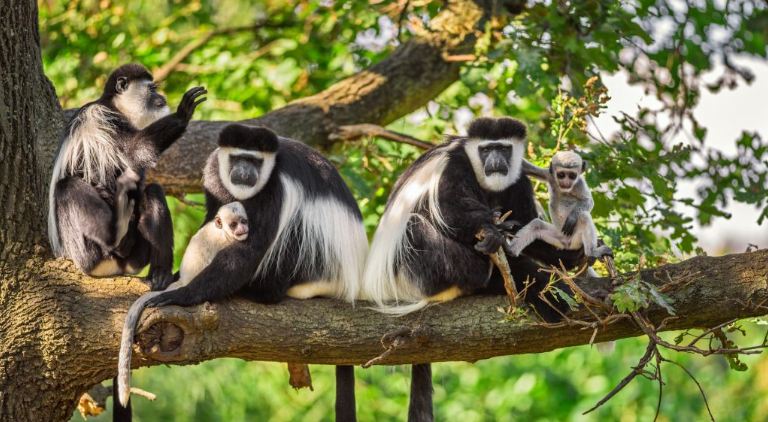
While they may not be as a charismatic as chimpanzees, colobus monkeys are extremely social primates that form huge group sizes – one of the two semi-habituated troops in Nyungwe National Park contains more than 500 members.
Finding yourself in the presence of literally hundreds of beautiful primates leaping through the treetops can be a fascinating experience. Curious creatures by nature, colobus monkeys in Nyungwe Forest seem to almost revel in their playful interactions with human visitors.
Troops of Angolan colobus maintain fairly well-ordered territories, which is good news for those interested a colobus tracking, as the semi-habituated group in Nyungwe always stick to the colored trails. Usually, the trackers can find the colobus monkey troop in one hour or so.
13. Birding in Nyungwe Forest National Park
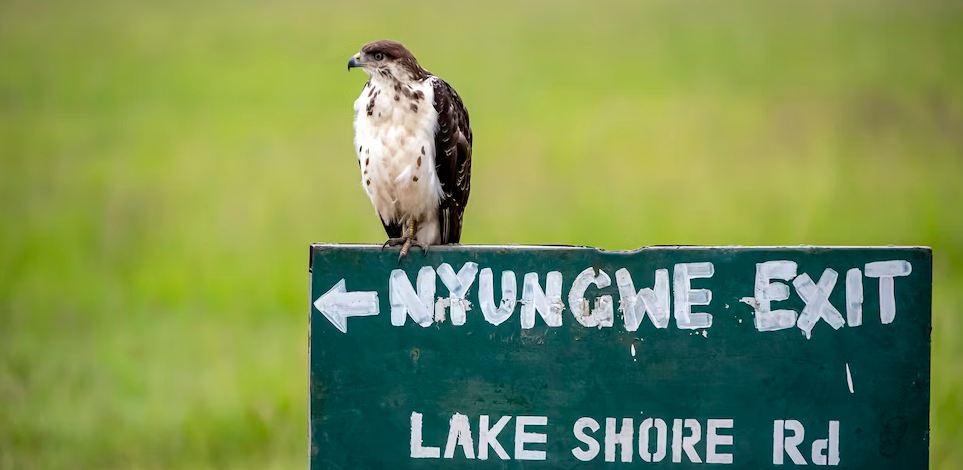
Nyungwe Forest is by far the top spot for birdwatching in Rwanda, with over 320 species, including 27 Albertine endemics.
The paved road through this forest park allows viewing at all levels of the forest: expect cinnamon-chested bee-eaters and mountain buzzards perched along here, plus numerous sunbirds, wagtails and flocks of waxbills. Other commonly sighted birds include turacos, francolins, hornbills, African crowned eagles, and even Congo bay owls.
14. Nyungwe Forest Canopy Walk
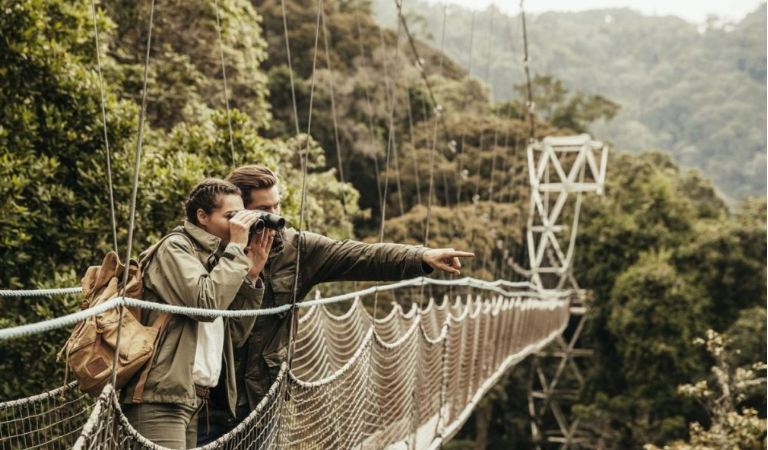
Suspended above a ravine in the lush montane rainforest of Nyungwe, you will appreciate the jungle anew from a unique monkey’s-eye perspective.
This 500-foot-long (160 meters) and at times 230-foot-high (70m) construction ranks as one of the world’s most spectacular forest canopy walkways and a big draw for visitors looking something unusual on their Rwanda safaris.
Nyungwe Forest canopy walk offer unforgettable views of the surrounding forest and is accessible after a preliminary 30-minute ascent. You will see plenty of orchids, butterflies, and colorful birds en route.
15. Hiking in Nyungwe Forest
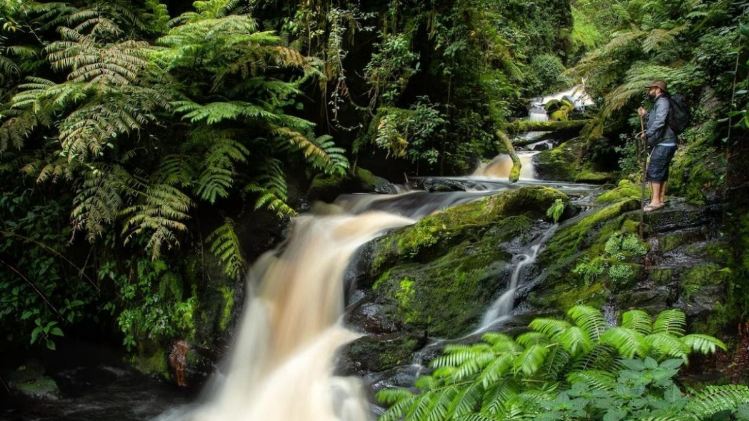
Nyungwe Forest National Park is one of the most rewarding hiking destinations for nature lovers. An extensive network of immaculately maintained trails provide varying levels of physical difficulty, each with its unique attractions, including waterfalls, hidden pools, flora, fauna and breathtaking views.
16. Tour Gisakura Tea Estate near Nyungwe
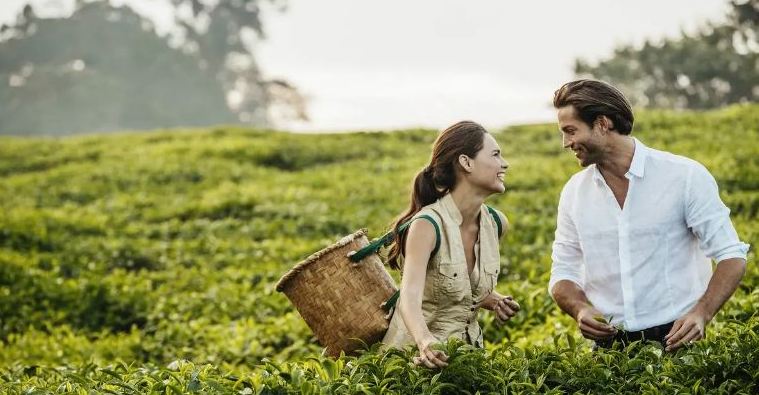
Rwanda’s rich volcanic soil, coupled with high altitudes, creates ideal growing conditions for tea, one of the country’s major exports. Hugging the rolling hills at the western fringes of Nyungwe Forest, the Gisakura Tea Estate is one the most famous tea plantations in Rwanda, and certainly among the most beautiful. Tea tours and tastings are easily arranged.
You’ll watch men and women balance baskets laden with tea leaves on their heads and hips, as they weave seamlessly amongst the growth. During this tour, you also have an opportunity to see a troop of Colobus monkeys which live in a patch of forest within the plantation.
17. Visit the traditional king’s palace Museum in Nyanza near Nyungwe
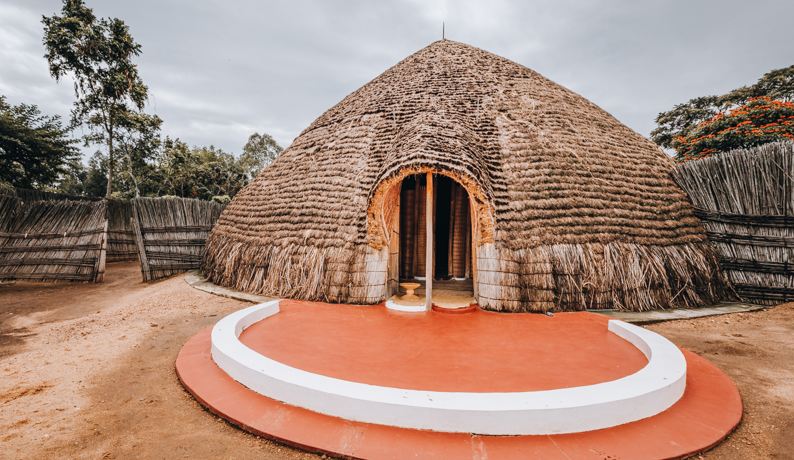
A visit to the former seat of the Rwandan Kingdom is a fantastic way to break up the lengthy drive between Kigali city and Nyungwe, and offers a window into Rwanda’s pre-colonial past.
Tenderly restored to its former glory using traditional materials, it is today an impressive museum encircled by the royal long-horned cows known as Inyambo that were traditionally associated with the Rwandan monarchy. The elegant cows, derived from the wider long-horned Ankole breed, played an important role during ceremonies in honor of the king.
Here, you’ll meet these royal cows on site and the herder who sings to them. You’ll also wander the halls of the simple, modern home of the country’s last king.
18. Visit the Ethnographic Museum in Huye near Nyungwe
Situated near the King’s Palace, this excellent Ethnographic Museum was given to Rwanda as a gift from Belgium in 1989 to commemorate 25 years of independence. While the building itself is surely one of the most beautiful structures in Rwanda, the museum wins top marks for having one of the best archaeological and ethnological collections in East Africa. The 7 exhibition halls feature some very interesting items and everything is remarkably well lit and presented. The first hall has a museum shop.
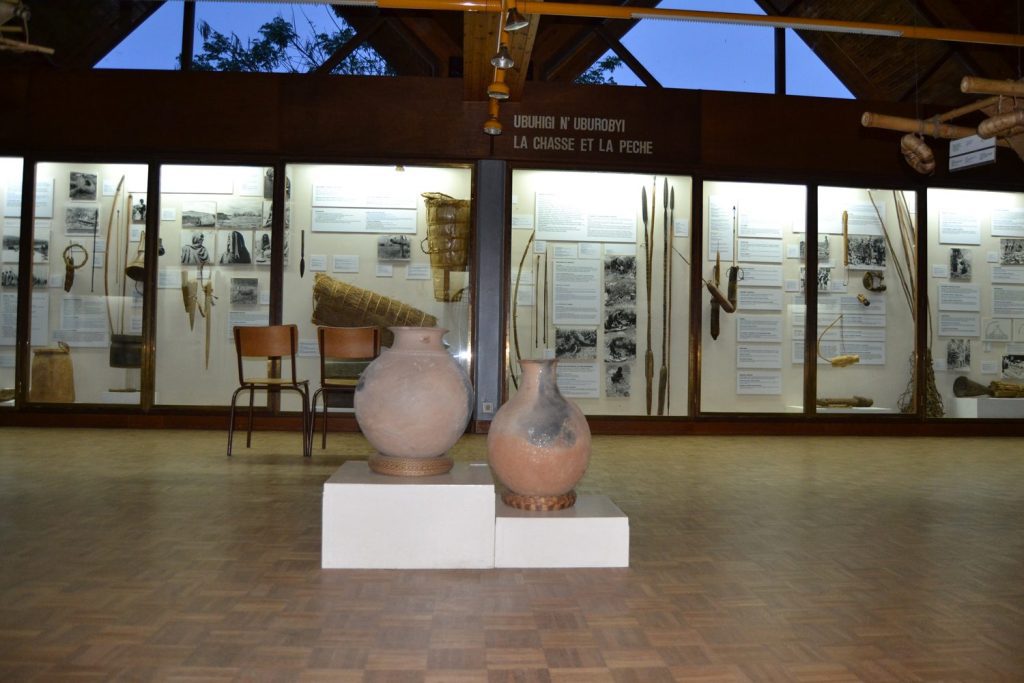
The second hall contains geological displays including a big relief map that portrays the topography of Rwanda as something akin to a crumpled piece of paper.
The middle halls features items used in hunting agriculture, animal husbandry, weaving, pottery and woodwork. The kagondo hut forms the centrepiece of an exhibit on housing and living compounds in pre-colonial times.
The final halls exhibit traditional clothing such as an isinde (wicker raincoat), pounded bark garments and goat-skin capes – and information on the prehistory of Rwanda, including an interesting section on divination.
There is also a side hall that is used for temporary exhibitions. The Ethnographic Museum is also the venue where the Intore dancers and drummers perform.
19. Visit Lake Kivu
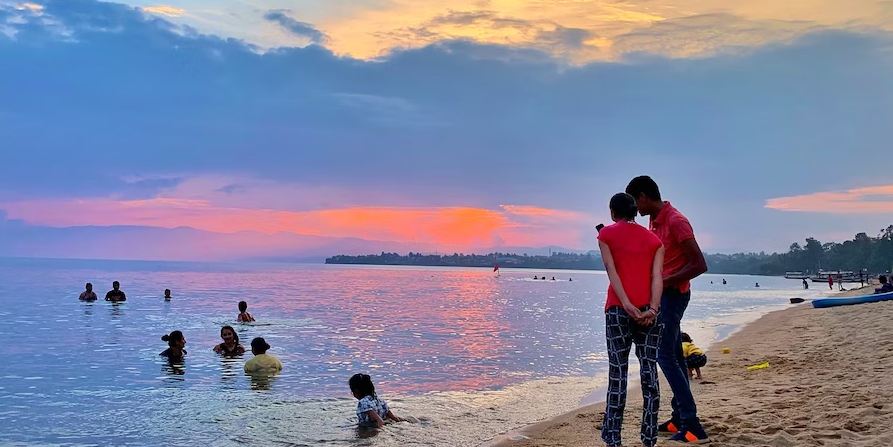
Known for its immaculate beaches and warm, safe swimming freshwater waters, Lake Kivu is one of Africa’s Great Lakes. The lake is not only beautiful but also a wonderful destination to go and relax after a gorilla-trekking safari. You can also enjoy superb conditions for canoeing, kayaking, and boat cruising on the lake, while taking in the mesmerizing views of the surrounding mountains.
20. Cycle along the Congo Nile Trail
For an exhilarating biking experience, nothing beats the Congo Nile Trail. Well off the beaten path, this is both a cycling and hiking trail that runs along the beautiful shores of Lake Kivu.
Launched in 2009, it uses a series of interconnected rural paths, dirt roads, and passable tracks through the tropical Kivu Region. Running roughly parallel to the eastern shores of the lake for 140 miles/227 kilometers from Gisenyi town to Kamembe, the ride can be completed in approximately 5 days.
Expect a unique cycling adventure amid rolling hills, vast coffee plantations, and fascinating tropical forests – not to mention breathtaking views of the lake. Cycling is not the only focus, it is also a great way to meet local people and share traditional activities such as honey harvesting, craft making, visiting coffee or tea estates, or joining local fishermen as they spend the night fishing sambaza (small fish).
There are also many hidden beaches en route where you can take a dip. You can tackle the Congo Nile Trail on your own, but a guide is recommended. There are several types of accommodation along the way. Your guide can arrange camping, but if you are not interested in tents or campsites, there are, guesthouses, homestays and small lodges you can opt to stay in.
Ready to Start Planning Your Rwanda Trip?
With so much to be enjoyed, it is hard not to want to put aside more than a few days for your Rwanda safari adventure, exploring both its quaintly hidden gems and its more widely loved spots. Get in touch with our safari experts to start planning the perfect Rwanda safari tour. With almost 10 years of experience and knowledge, we are professionals in crafting tailor-made itineraries that are sure to be the trip of your dreams.
